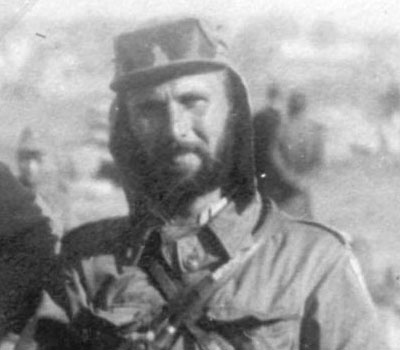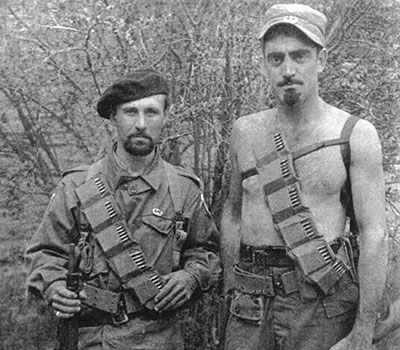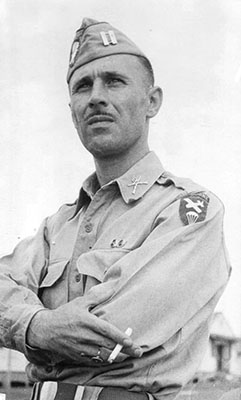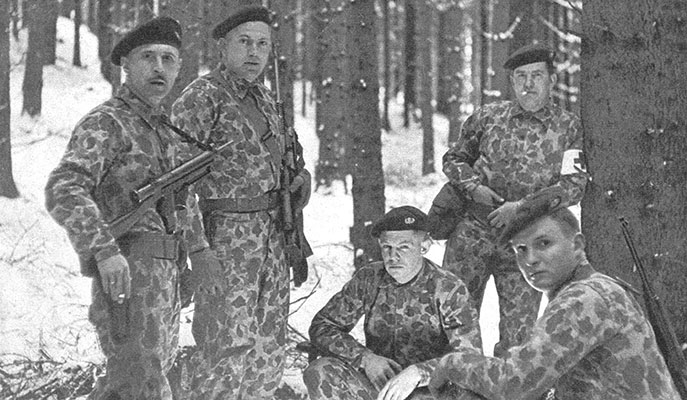FULL SERIES: Major Bruckner
Part I: SOE France, OSS Burma and China, 10th SFG, SF Instructor, 77th SFG, Laos, and Vietnam
Part II: Pre-WWII–OSS Training 1943
DOWNLOAD
This photo essay introduces an early Special Forces pioneer, Herbert R. Brucker, former radioman of a three-man Special Operations Executive team that operated in France before D-Day. British special operations unlike the Office of Strategic Services (OSS) Jedburgh and OG (Operational Groups) had been working behind German lines since late 1940. Technical Sergeant Four (T/4) Brucker was detailed to the SOE in England as “Herbert E-54,” because he had been raised from infancy in the bilingual Alsace and Lorraine provinces of France.1 On 26 May 1944, Second Lieutenant “Albert Brunion” (codename “Sacha”) and Second Lieutenant Roger B. Henquet jumped into France to establish the “Hermit” circuit, replacing “Prosper” that had been “rolled up” by the Germans. Their third teammate, Frenchman Henri Fucs, a surgeon recovering from a bicycle injury, joined them later. Having attributed the majority of the “Hermit” team success to “Albert Brunion,” Brucker was awarded the Distinguished Service Cross.2
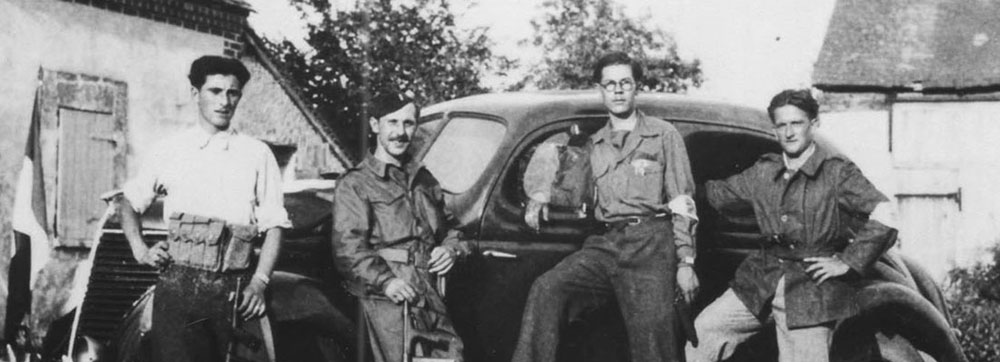
After returning to England in September 1944, the U.S. Army second lieutenant agreed to another OSS assignment in the Far East. 1LT Brucker was first attached to Detachment 101 in the Naga Hills of North Burma. “The weather was wet and your clothes, boots, and equipment quickly mildewed. That place was full of termites, leeches, and scorpions. Since most of Detachment 101 were with the Kachins fighting there was little for us to do with the Naga tribesmen. They shipped us to Detachment 202 in Kunming,” said Brucker. “However, I did run into Major Aaron Bank in Burma. He chewed my butt for having a goatee and mustache.”3

